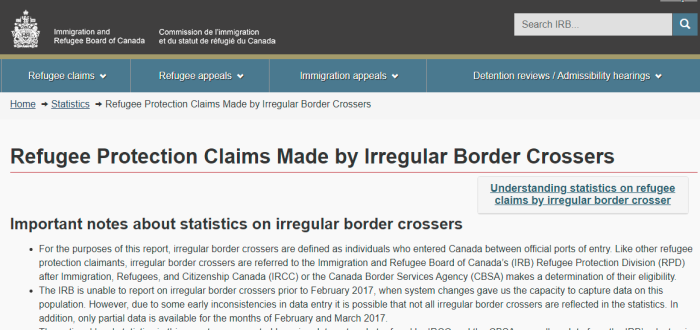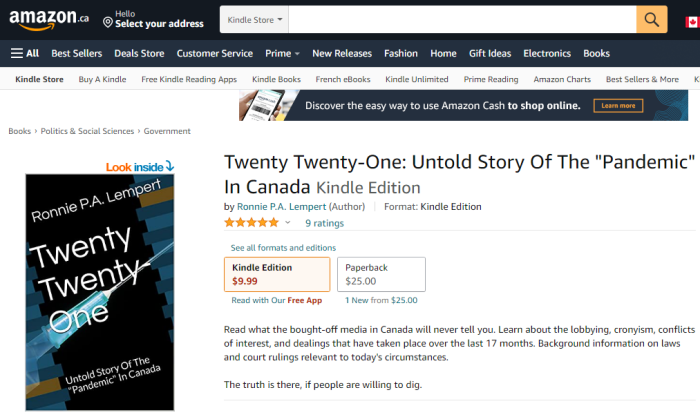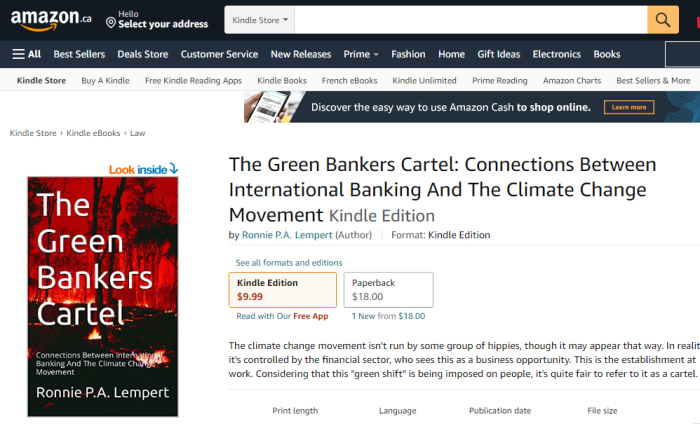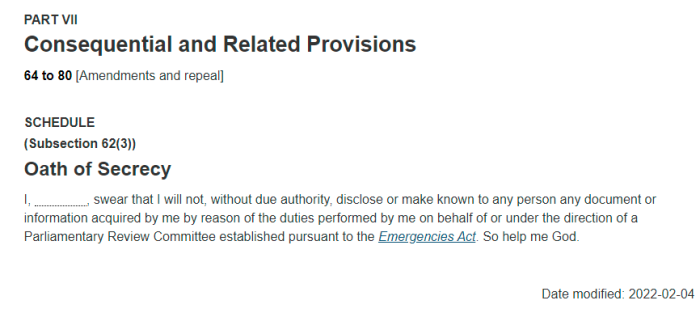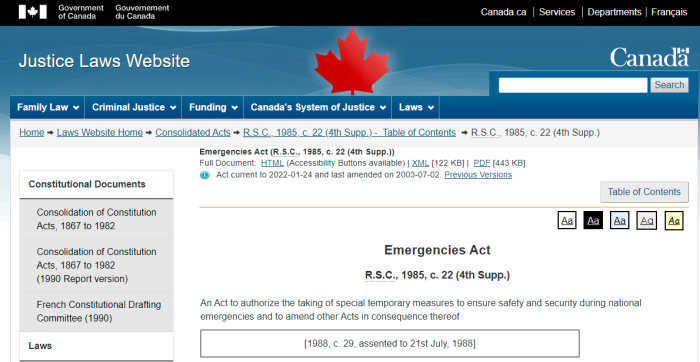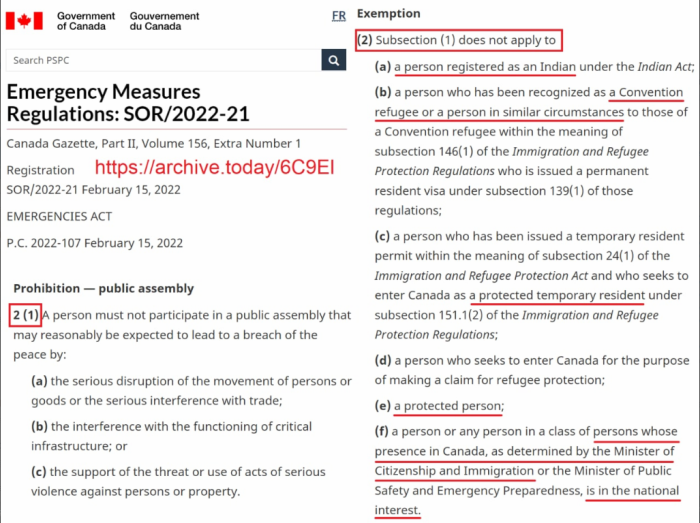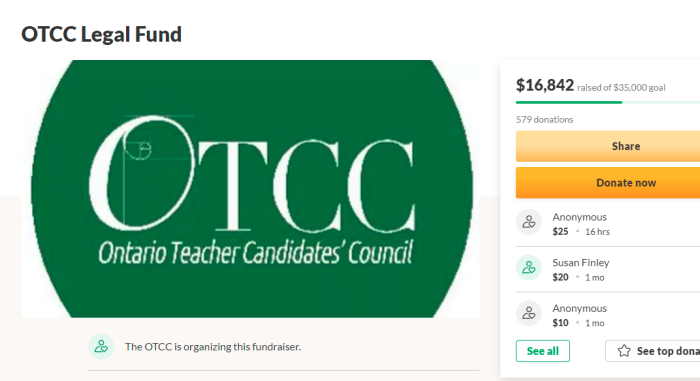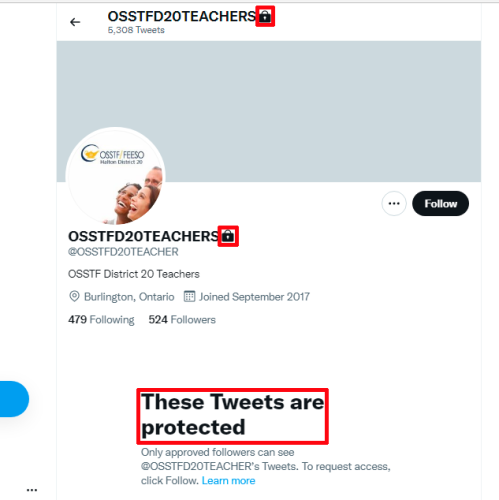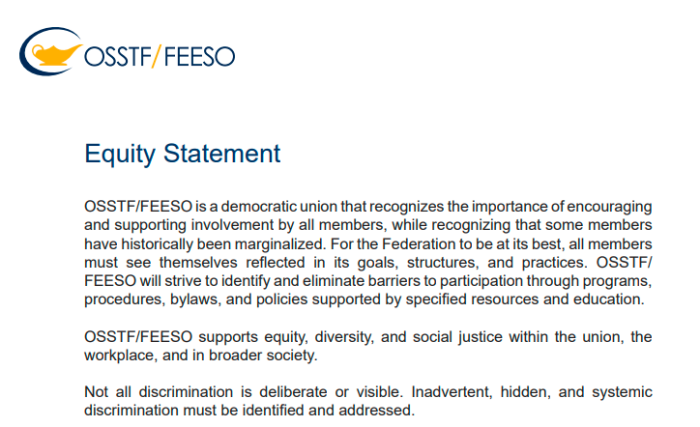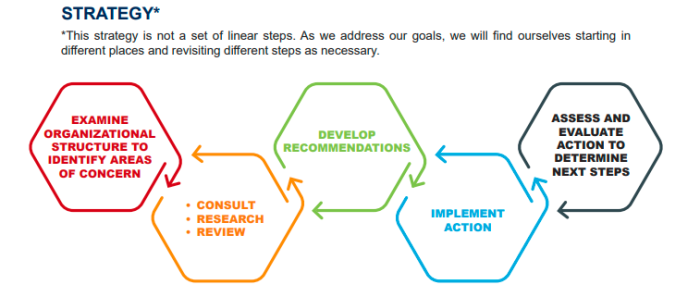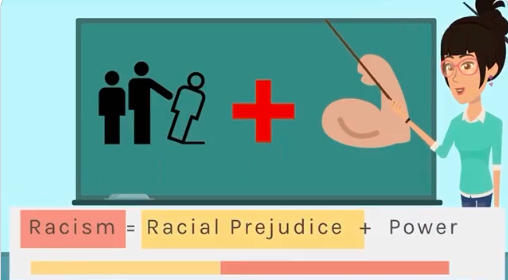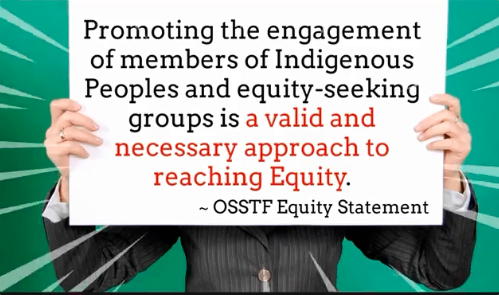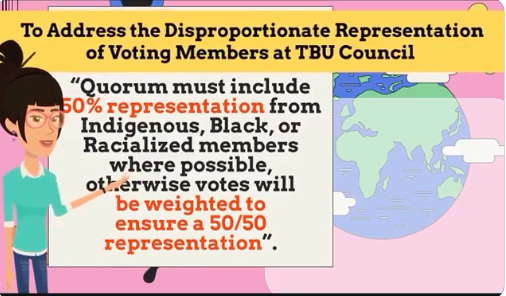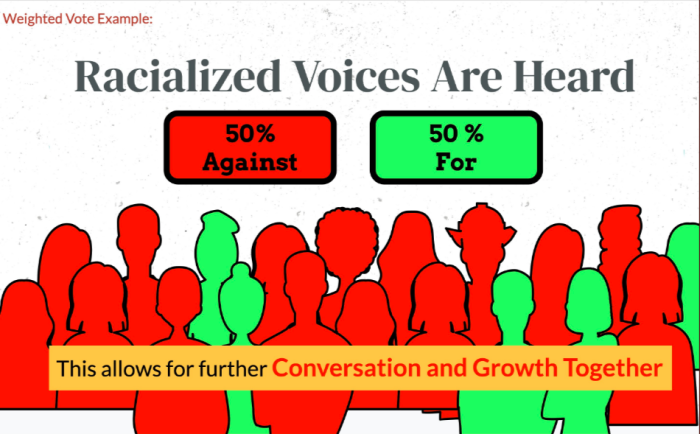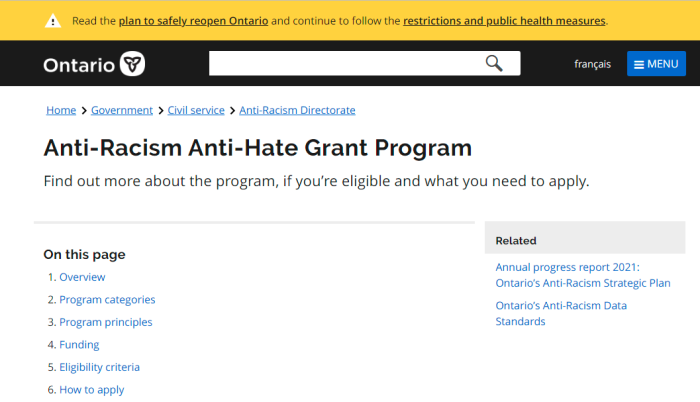
Despite there supposedly being a global pandemic in 2020, the population replacement continues in Canada. However, it had to be slowed down (this year) to at least make things plausible. The mask is a nice touch: we need a constant reminder about this health crisis, otherwise we’d forget.
1. Mass LEGAL Immigration In Canada
Despite what many think, LEGAL immigration into Canada is actually a much larger threat than illegal aliens, given the true scale of the replacement that is happening. What was founded as a European (British) colony is becoming unrecognizable due to forced demographic changes. There are also social, economic, environmental and voting changes to consider. See this Canadian series, and the UN programs for more detail. Politicians, the media, and so-called “experts” have no interest in coming clean on this.
CLICK HERE, for UN Genocide Prevention/Punishment Convention.
CLICK HERE, for Barcelona Declaration & Kalergi Plan.
CLICK HERE, for UN Kalergi Plan (population replacement).
CLICK HERE, for UN replacement efforts since 1974.
CLICK HERE, for tracing steps of UN replacement agenda.
Note: If there are errors in calculating the totals, please speak up. Information is of no use to the public if it isn’t accurate.
2. Annual Immigration Reports To Parliament
2004.annual.immigration.report.to.parliament
2005.annual.immigration.report.to.parliament
2006.annual.immigration.report.to.parliament
2007.annual.immigration.report.to.parliament
2008.annual.immigration.report.to.parliament
2009.annual.immigration.report.to.parliament
2010.annual.immigration.report.to.parliament
2011.annual.immigration.report.to.parliament
2012.annual.immigration.report.to.parliament
2013.annual.immigration.report.to.parliament
2014.annual.immigration.report.to.parliament
2015.annual.immigration.report.to.parliament
2016.annual.immigration.report.to.parliament
2017.annual.immigration.report.to.parliament
2018.annual.immigration.report.to.parliament
2019.annual.immigration.report.to.parliament
2020.annual.immigration.report.to.parliament
2021.annual.immigration.report.to.parliament
The information in this article, and similar ones, comes directly from information provided by the Government of Canada in their annual reports. These numbers, while likely not truly accurate, are at least a good starting point.
3. Immigration Largely Controlled By Provinces
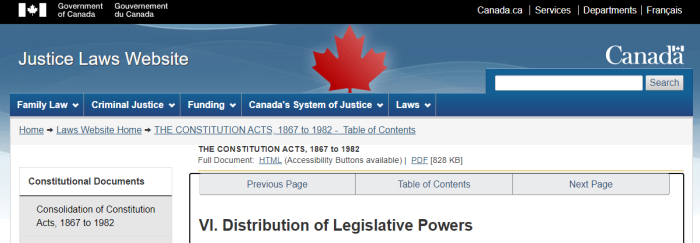
Concurrent Powers of Legislation respecting Agriculture, etc.
.
95 In each Province the Legislature may make Laws in relation to Agriculture in the Province, and to Immigration into the Province; and it is hereby declared that the Parliament of Canada may from Time to Time make Laws in relation to Agriculture in all or any of the Provinces, and to Immigration into all or any of the Provinces; and any Law of the Legislature of a Province relative to Agriculture or to Immigration shall have effect in and for the Province as long and as far only as it is not repugnant to any Act of the Parliament of Canada.
Contrary to popular belief, immigration is largely set by the Provinces. This is laid out in Section 95 of the Constitution. While Ottawa may impose laws from time to time, the understanding seems to be that the Premiers will be mostly the decision makers. While it’s understandable to get angry at Trudeau, he’s far from the only deserving target.
Additionally, there are talks underway to launch a Municipal Nominee Program, which will allow cities to directly bring people in, and to sponsor their bids to become permanent residents. It’s unclear at this point how large it will ultimately be.
4. Key Highlights From The Year 2020
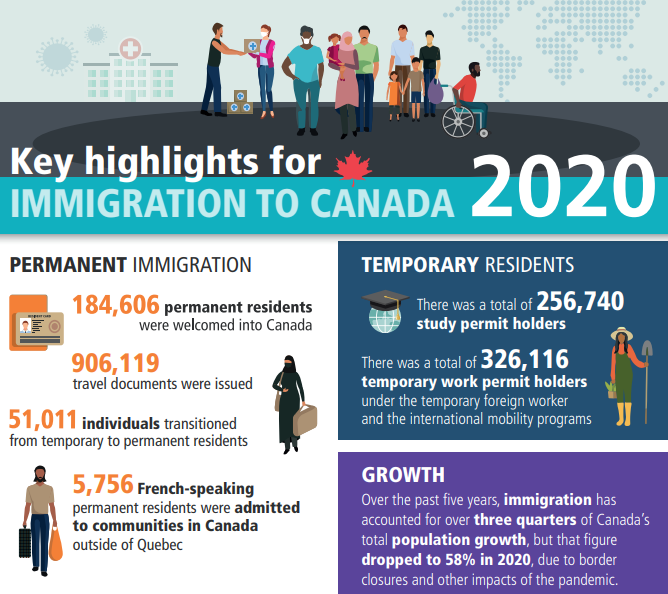
AS stated before, it’s not entirely clear how many people are staying after some kind of temporary visa, v.s. how many leave. We also don’t have hard data on the “inadmissibles” who don’t leave, and on the visitors who overstay. Consequently, take this as a rough estimate:
184,606 new permanent residents
-51,101 temps transitioning to PR
=133,505 new permanent residents brought into Canada
Temporaries Brought Into Canada
256,740 (Student Visas Issued)
+84,609 (Temporary Foreign Worker Program)
+242,130 (International Mobility Program)
= 583,452 (in the temporary classes)
2,044 “inadmissibles” allowed under Rule 24(1) of IRPA
115 “inadmissibles” allowed under Rule 25.2(1) of IRPA
648,789 eTAs (electronic travel authorizations)
257,330 TRV (temporary resident visas)
How many people remained in Canada? Who knows?
The Government brags about expediting work permits for “essential workers”, even as Canada experienced record high unemployment. They even created a program for “refugees” to get accelerated permanent residence if they work in health care settings. This comes at a time when Canadian workers are being let go for refusing the experimental shots.
Foreign students (under a rule change) became exempt from the 20 hour/week work limit that their visas typically imposed. Supposedly, this was to enable them to provide essential services. Again, this seems screwed up given how many Canadians were forced out of work.
Foreign students also received emergency benefits designed for Canadians, although the full extent of this is not yet published.
In January 2020, the G.T.A./IIRC started their program to give out permanent residencies to 500 people — and their families — who had overstayed their initial visas. This could be interpreted as an amnesty-for-illegals program, and we’ll have to see how much it expands.
IIRC also extended the Interim Federal Health Program, or IFHP, which is a plan that also covers so-called asylum claimants. This applies also to people who’ve illegally entered from the United States. Some 14% of claimants in 2020 had entered the country illegally, primarily via Roxham Road.
There’s also an initiative underway to bring in large numbers of people from Hong Kong, who claim to be fleeing persecution. Interesting, as Canada doesn’t seem to be run much better these days.
The Rainbow Refugee Assistance Program is supposed to grow from 15 to 50. This is to resettle people alleging they are persecuted because of their questionable behaviours.
Canada also will allow people (women primarily) fleeing domestic violence to get a temporary permit, with a the possibility of becoming a permanent resident. There isn’t any information given about whether the abuser will be deported.
There is, of course, the usual GBA+ nonsense in the report.
5. Continued Population Replacement
(Page 18 of the 2004 Annual Report to Parliament)
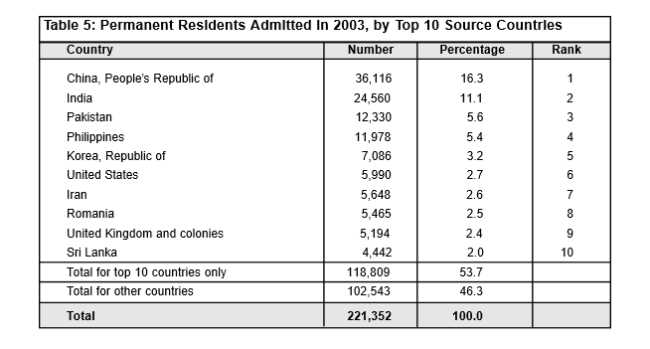

(Page 24 of the 2005 Annual Report to Parliament)

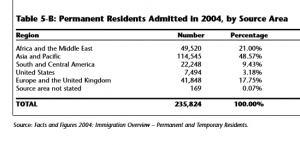
(Page 18, 19 of the 2006 Annual Report to Parliament)
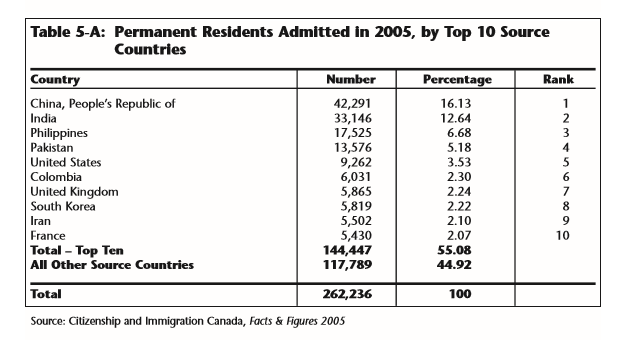

(Page 19, 20 of the 2007 Annual Report to Parliament)
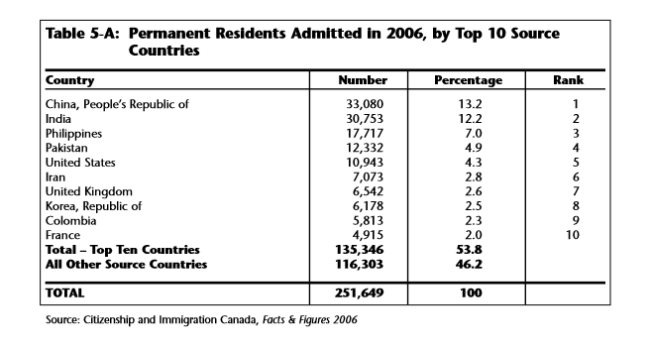
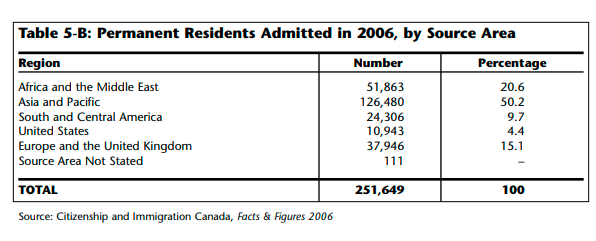
(Page 21, 22 of the 2008 Annual Report to Parliament)

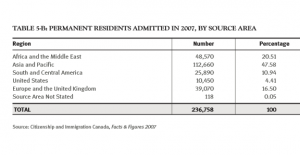
(Page 16 of the 2009 Annual Report to Parliament)
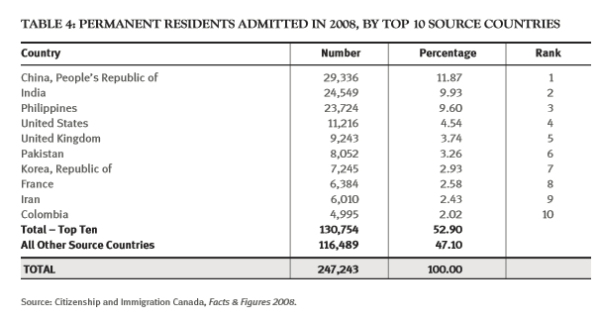
(Page 14 of the 2010 Annual Report to Parliament)
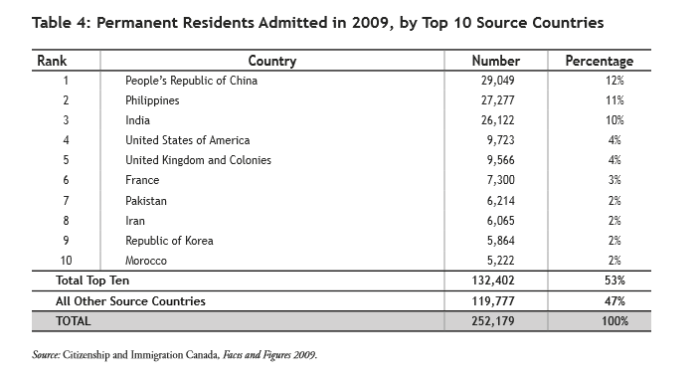
(Page 18 of the 2011 Annual Report to Parliament)
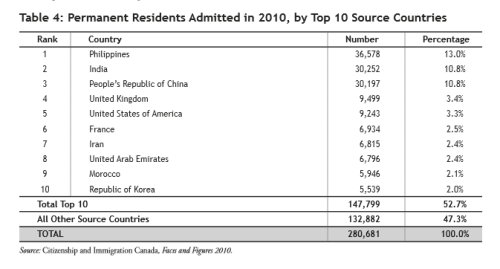
(Page 15 of the 2012 Annual Report to Parliament)
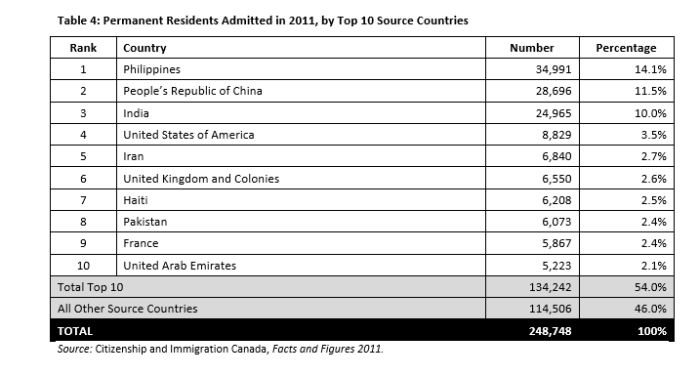
(Page 19 of the 2013 Annual Report to Parliament)
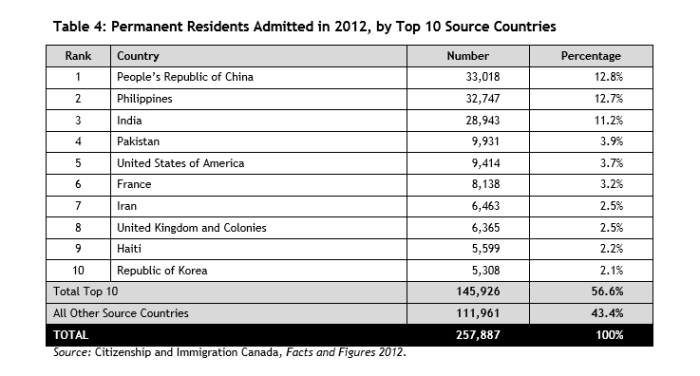
(Page 16 of the 2014 Annual Report to Parliament)
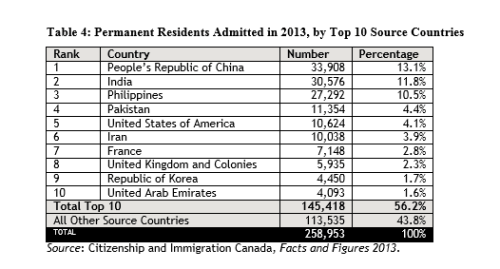
(Page 16 of the 2015 Annual Report to Parliament)
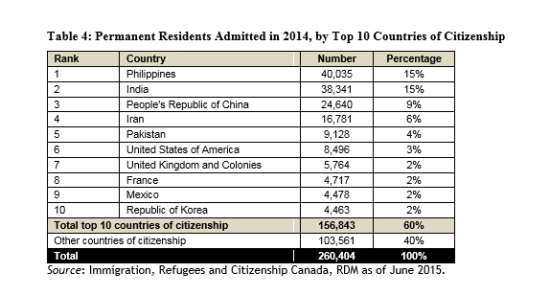
(Page 10 of the 2016 Annual Report to Parliament)
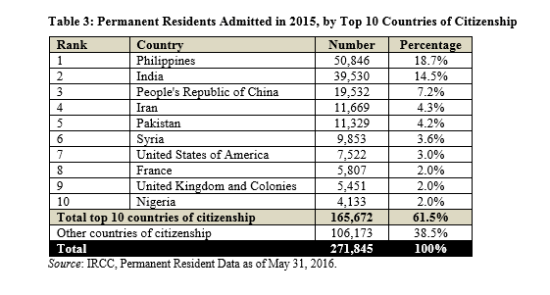
(Page 14 of the 2017 Annual Report to Parliament)

(Page 28 of the 2018 Annual Report to Parliament)
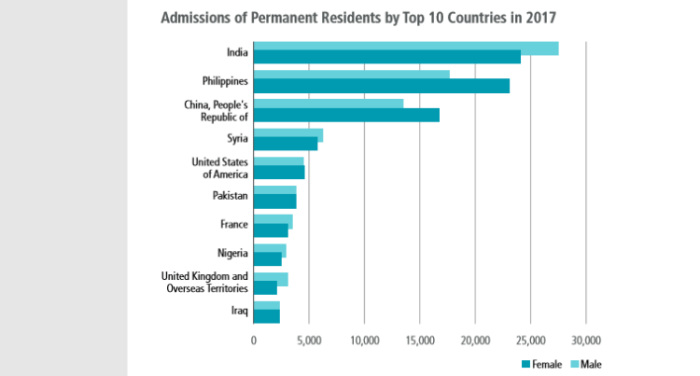
(Page 36 of the 2019 Annual Report to Parliament)
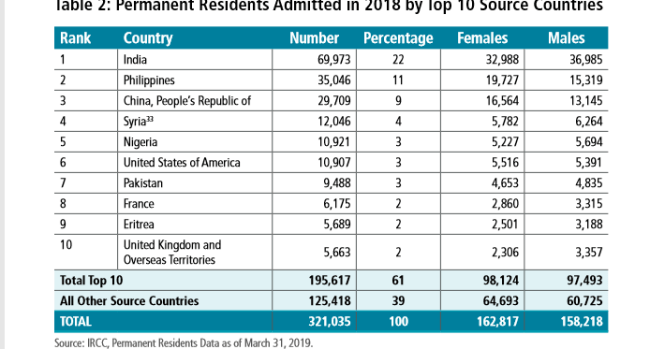
(Page 33 of the 2020 Annual Report to Parliament)
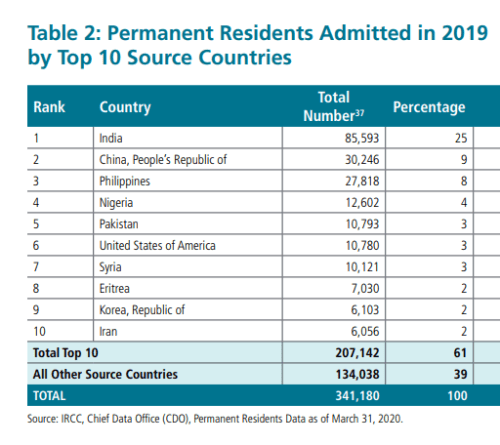
(Page 36 of the 2021 Annual Report to Parliament)
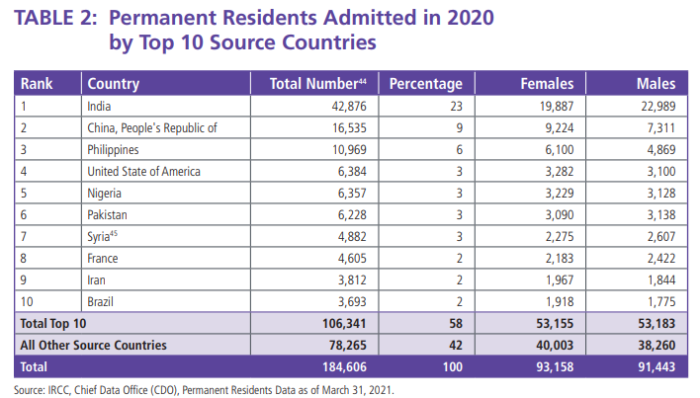
Ever get the sense that people are European descent are being replaced? It’s no coincidence. The plan for decades has been to bring in large numbers of people from the 3rd World (mostly Asia and Africa), to remake society.
As usual, the top 3 are: (a) India; (b) China; and (c) The Philippines. No surprise that the enclaves in Canada are growing. More data from the recent census will be released later this year, and the results shouldn’t be a shock to anyone.
6. Temporary Visitors To Canada
TRV = Temporary Resident Visa
eTA = Electronic Travel Authorization
| YEAR |
TRV Issued |
eTA Issued |
Totals |
| 2016 |
1,347,898 |
2,605,077 |
3,952,975 |
| 2017 |
1,617,222 |
4,109,918 |
5,570,197 |
| 2018 |
1,898,324 |
4,125,909 |
6,024,233 |
| 2019 |
1,696,871 |
4,077,471 |
5,774,342 |
| 2020 |
257,330 |
648,789 |
906,119 |
Travelers entering Canada dropped by 85% in 2020, compared to 2019, according to the Government’s data. Now, if we could just do that to visa holders, and make it permanent.
7. More “Inadmissibles” Let Into Canada

Broadly speaking, there are two provisions within IRPA, the Immigrant and Refugee Protection Act, that allow people who were previously deemed inadmissible to Canada to be given Temporary Resident Permits anyway. Here are the totals from the Annual Reports to Parliament on Immigration. Note: the first one listed only started in 2010.
Those allowed in under Rule 25.1(2) of IRPA
| YEAR |
TRP Issued |
Cumulative |
| 2010 |
17 |
17 |
| 2011 |
53 |
70 |
| 2012 |
53 |
123 |
| 2013 |
280 |
403 |
| 2014 |
385 |
788 |
| 2015 |
1,063 |
1,851 |
| 2016 |
596 |
2,447 |
| 2017 |
555 |
3002 |
| 2018 |
669 |
3,671 |
| 2019 |
527 |
4,198 |
| 2020 |
115 |
4,313 |
From 2010 to 2020, a total of 4,313 people who were otherwise inadmissible to Canada were allowed in anyway under Rule 25.1(2) of IRPA. This is the category that Global News previously reported on. As for the other one, under Rule 24(1) of IRPA, Global News leaves that out:
| Year |
Permits |
Cumulative |
| 2002 |
12,630 |
12,630 |
| 2003 |
12,069 |
24,699 |
| 2004 |
13,598 |
38,297 |
| 2005 |
13,970 |
52,267 |
| 2006 |
13,412 |
65,679 |
| 2007 |
13,244 |
78,923 |
| 2008 |
12,821 |
91,744 |
| 2009 |
15,640 |
107,384 |
| 2010 |
12,452 |
119,836 |
| 2011 |
11,526 |
131,362 |
| 2012 |
13,564 |
144,926 |
| 2013 |
13,115 |
158,041 |
| 2014 |
10,624 |
168,665 |
| 2015 |
10,333 |
178,998 |
| 2016 |
10,568 |
189,566 |
| 2017 |
9,221 |
198,787 |
| 2018 |
7,132 |
205,919 |
| 2019 |
6,080 |
211,999 |
| 2020 |
2,044 |
214,043 |
From 2002 to 2020 (inclusive), a total of 214,043 people previously deemed inadmissible to Canada were given Temporary Resident Permits anyway. This has almost certainly been going on for a lot longer, but is as far back as the reports go. Now let’s consider the reasons these people are initially refused entry.
SEC = Security (espionage, subversion, terrorism)
HRV = Human or International Rights Violations
CRIM = Criminal
S.CRIM = Serious Criminal
NC = Non Compliance
MR = Misrepresentation
| YEAR |
Total |
SEC |
HRV |
Crim |
S.Crim |
NC |
MR |
| 2002 |
12,630 |
? |
? |
? |
? |
? |
? |
| 2003 |
12,069 |
17 |
25 |
5,530 |
869 |
4,855 |
39 |
| 2004 |
13,598 |
12 |
12 |
7,096 |
953 |
4,981 |
20 |
| 2005 |
13,970 |
27 |
15 |
7,917 |
981 |
4,635 |
21 |
| 2006 |
13,412 |
29 |
20 |
7,421 |
982 |
4,387 |
18 |
| 2007 |
13,244 |
25 |
8 |
7,539 |
977 |
4,109 |
14 |
| 2008 |
12,821 |
73 |
18 |
7,108 |
898 |
4,170 |
17 |
| 2009 |
15,640 |
32 |
23 |
6,619 |
880 |
7,512 |
10 |
| 2010 |
12,452 |
86 |
24 |
6,451 |
907 |
4,423 |
36 |
| 2011 |
11,526 |
37 |
14 |
6,227 |
899 |
3,932 |
11 |
| 2012 |
13,564 |
20 |
15 |
7,014 |
888 |
5,206 |
18 |
| 2013 |
13,115 |
17 |
10 |
6,816 |
843 |
5,135 |
8 |
| 2014 |
10,624 |
12 |
2 |
5,807 |
716 |
3,895 |
14 |
| 2015 |
10,333 |
3 |
3 |
5,305 |
578 |
4,315 |
28 |
| 2016 |
10,568 |
8 |
4 |
4,509 |
534 |
2,788 |
20 |
| 2017 |
9,221 |
10 |
5 |
5,035 |
591 |
3,412 |
121 |
| 2018 |
7,132 |
5 |
3 |
4,132 |
559 |
2,299 |
131 |
| 2019 |
6,080 |
2 |
0 |
3,202 |
546 |
2,139 |
175 |
| 2020 |
2,044 |
2 |
1 |
666 |
131 |
1,000 |
37 |
In 2020, only 2,044 people barred were allowed in under Rule 24(1) of IRPA, which is the lowest it’s been since this legislation was enacted. Nonetheless, ZERO of these people should be coming in.
Interestingly, even though the Government has wide discretion to let people into the country under 24(1) and 25.1(2) of IRPA, it chose not to use its discretion to prohibit anyone from entering.
Even if people are excluded from Canada — for a variety of valid reasons — often they will still be given temporary entrance into Canada. Will they ever leave? Who knows?
8. Students & Temporary Workers
There are also some other categories. Below are the “temporary” categories listed in the Annual Immigration Reports to Parliament. Now, let’s take a look at all of it in context. Data is compiled from the 2004 to 2021 Annual Reports (which cover the years of 2003 to 2020).
| Year |
Stu |
TFWP |
IMP |
Total |
| 2003 |
61,293 |
82,151 |
– |
143,444
| |
| 2004 |
56,536 |
90,668 |
– |
147,204
| |
| 2005 |
57,476 |
99,146 |
– |
156,622
| |
| 2006 |
61,703 |
112,658 |
– |
174,361
| |
| 2007 |
64,636 |
165,198 |
– |
229,834
| |
| 2008 |
79,509 |
192,519 |
– |
272,028
| |
| 2009 |
85,140 |
178,478 |
– |
263,618
| |
| 2010 |
96,157 |
182,276 |
– |
278,433
| |
| 2011 |
98,383 |
190,842 |
– |
289,225
| |
| 2012 |
104,810 |
213,573 |
– |
318,383
| |
| 2013 |
111,865 |
221,310 |
– |
333,175
| |
| 2014 |
127,698 |
95,086 |
197,924 |
420,078
| |
| 2015 |
219,143 |
73,016 |
175,967 |
468,126
| |
| 2016 |
265,111 |
78,402 |
207,829 |
551,342
| |
| 2017 |
317,328 |
78,788 |
224,033 |
620,149
| |
| 2018 |
356,876 |
84,229 |
255,034 |
696,139
| |
| 2019 |
402,427 |
98,310 |
306,797 |
807,534
| |
| 2020 |
256,740 |
84,609 |
242,130 |
583,452
| |
Stu = Student Visa
TFWP = Temporary Foreign Worker Program
IMP = International Mobility Program
Even during a “global pandemic” there were still 583,452 international student and temporary worker visas issued. This does represent a drop of about 28% from the 807,534 that came in 2019. Still, this is a staggering large number.
There are, of course, a number of pathways to remain in Canada longer and/or transition in permanent residence. Let’s not pretend that they’re all leaving afterwards. In fact, recent changes have allowed students to remain in their home countries while collecting time towards a PR designation here.
9. Illegals Entering Via U.S./Canada Border
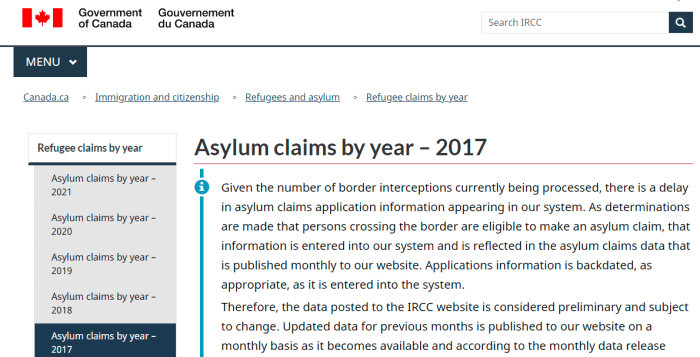
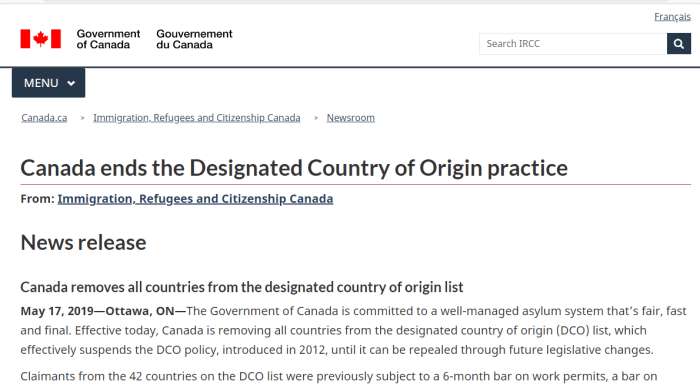
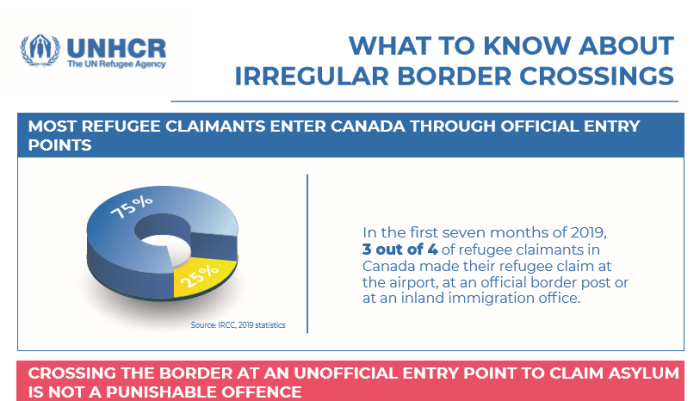
Although the report focused primarily on LEGAL immigration into Canada, the illegal brand is still worth talking about, since so few actually do. The United Nations gives detailed instructions and guidance on how to go about circumventing the border. The result, quite predictably, is that people keep trying to cross over.
| YEAR: 2019 |
| MONTH |
QUEBEC |
MANITOBA |
British Columbia |
OTHERS |
TOTAL |
| January |
871 |
1 |
16 |
1 |
888 |
| February |
800 |
1 |
6 |
2 |
808 |
| March |
967 |
13 |
22 |
0 |
1,002 |
| April |
1,206 |
15 |
25 |
0 |
1,246 |
| May |
1,149 |
27 |
20 |
0 |
1,196 |
| June |
1,536 |
26 |
5 |
0 |
1,567 |
| July |
1,835 |
23 |
15 |
1 |
1,874 |
| August |
1,712 |
26 |
22 |
2 |
1,762 |
| September |
1,706 |
19 |
17 |
0 |
1,737 |
| October |
1,595 |
18 |
8 |
1 |
1,622 |
| November |
1,118 |
9 |
21 |
0 |
1,148 |
| December |
1,646 |
2 |
5 |
2 |
1,653 |
| TOTAL |
16,136 |
180 |
182 |
9 |
16,503 |
| YEAR: 2020 |
| MONTH |
QUEBEC |
MANITOBA |
British Columbia |
OTHERS |
TOTAL |
| January |
1,086 |
7 |
7 |
0 |
1,100 |
| February |
976 |
2 |
2 |
0 |
980 |
| March |
930 |
7 |
18 |
0 |
955 |
| April |
1 |
0 |
5 |
0 |
6 |
| May |
17 |
0 |
4 |
0 |
21 |
| June |
28 |
1 |
3 |
1 |
33 |
| July |
29 |
2 |
17 |
0 |
48 |
| August |
15 |
3 |
0 |
0 |
18 |
| September |
30 |
4 |
7 |
0 |
41 |
| October |
27 |
0 |
4 |
0 |
31 |
| November |
24 |
0 |
8 |
0 |
32 |
| December |
26 |
2 |
8 |
0 |
36 |
| TOTAL |
3,189 |
28 |
84 |
1 |
3,302 |
| YEAR: 2021 |
| MONTH |
QUEBEC |
MANITOBA |
British Columbia |
OTHERS |
TOTAL |
| January |
28 |
1 |
10 |
0 |
39 |
| February |
39 |
0 |
1 |
0 |
40 |
| March |
29 |
5 |
2 |
0 |
36 |
| April |
29 |
2 |
2 |
0 |
33 |
| May |
12 |
3 |
13 |
0 |
28 |
| June |
11 |
0 |
6 |
0 |
17 |
| July |
28 |
5 |
6 |
0 |
39 |
| August |
63 |
2 |
11 |
0 |
76 |
| September |
150 |
0 |
19 |
0 |
169 |
| October |
96 |
0 |
17 |
0 |
113 |
| November |
832 |
1 |
12 |
0 |
845 |
| December |
2,778 |
0 |
33 |
0 |
2,811 |
| TOTAL |
4,095 |
19 |
132 |
0 |
4,246 |
Although not listed in the Annual Immigration Report to Parliament, this is worth a mention. Illegal crossings from the U.S. did drop quite drastically in the Spring of 2020. Of course, the Government had to play along and make this “pandemic” seem real. In recent months, however, it seems the numbers are creeping back up again.
Keep in mind, the text of the Safe Third Country Agreement requires both Canada and the U.S. to consult with the UNHCR on refugees, and to get input from NGOs. We haven’t had meaningful borders in a long time.
As a reminder: the Trudeau Government scrapped the DCO, or Designated Country of Origin, back in 2019. This would allow for claims from “safe” countries to be denied much more quickly. However, with things the way they are, it seems nowhere is really safe. While the issue was very mainstream from 2017 to 2019, it seems to have disappeared.
In June 2020, a new policy kicked in to finally track who is leaving the country. Even more strange that a Trudeau would bring it in when he did. Probably to make it harder for people fleeing his regime.
Overall, the replacement agenda slowed down in 2020, but it’s about to be kicked back into overdrive. Not a good situation to be in.
Like this:
Like Loading...
